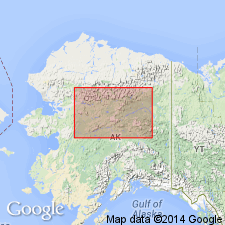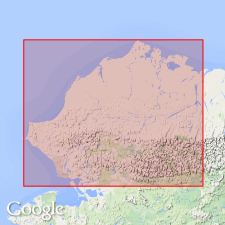
- Usage in publication:
-
- Lake quartzite-schist*
- Modifications:
-
- Named
- Dominant lithology:
-
- Schist
- AAPG geologic province:
-
- Alaska Northern region
Summary:
Named for great prominence at Chandlar Lake, Chandlar Lake region, northern AK. Is chiefly micaceous quartzite schist, about 6000 ft thick. Overlies Rapids schist (new); underlies Bettles series (new). Cut by greenish diorite dike about 3 mi south of Chandlar Lake. May be correlated with Birch Creek schists of Spurr (1898) in Yukon gold district. [no age given]
Source: GNU records (USGS DDS-6; Menlo GNULEX).

- Usage in publication:
-
- Lake quartzite schist†
- Modifications:
-
- Abandoned
- Age modified
- AAPG geologic province:
-
- Alaska Northern region
Summary:
Lake quartzite schist of Schrader (1900) in Chandalar district is not used in this report, because unit can not be defined lithologically, structurally, or paleontologically. Included in unnamed highly metamorphosed rocks of early Paleozoic or older age.
Source: GNU records (USGS DDS-6; Menlo GNULEX).
For more information, please contact Nancy Stamm, Geologic Names Committee Secretary.
Asterisk (*) indicates published by U.S. Geological Survey authors.
"No current usage" (†) implies that a name has been abandoned or has fallen into disuse. Former usage and, if known, replacement name given in parentheses ( ).
Slash (/) indicates name conflicts with nomenclatural guidelines (CSN, 1933; ACSN, 1961, 1970; NACSN, 1983, 2005, 2021). May be explained within brackets ([ ]).

